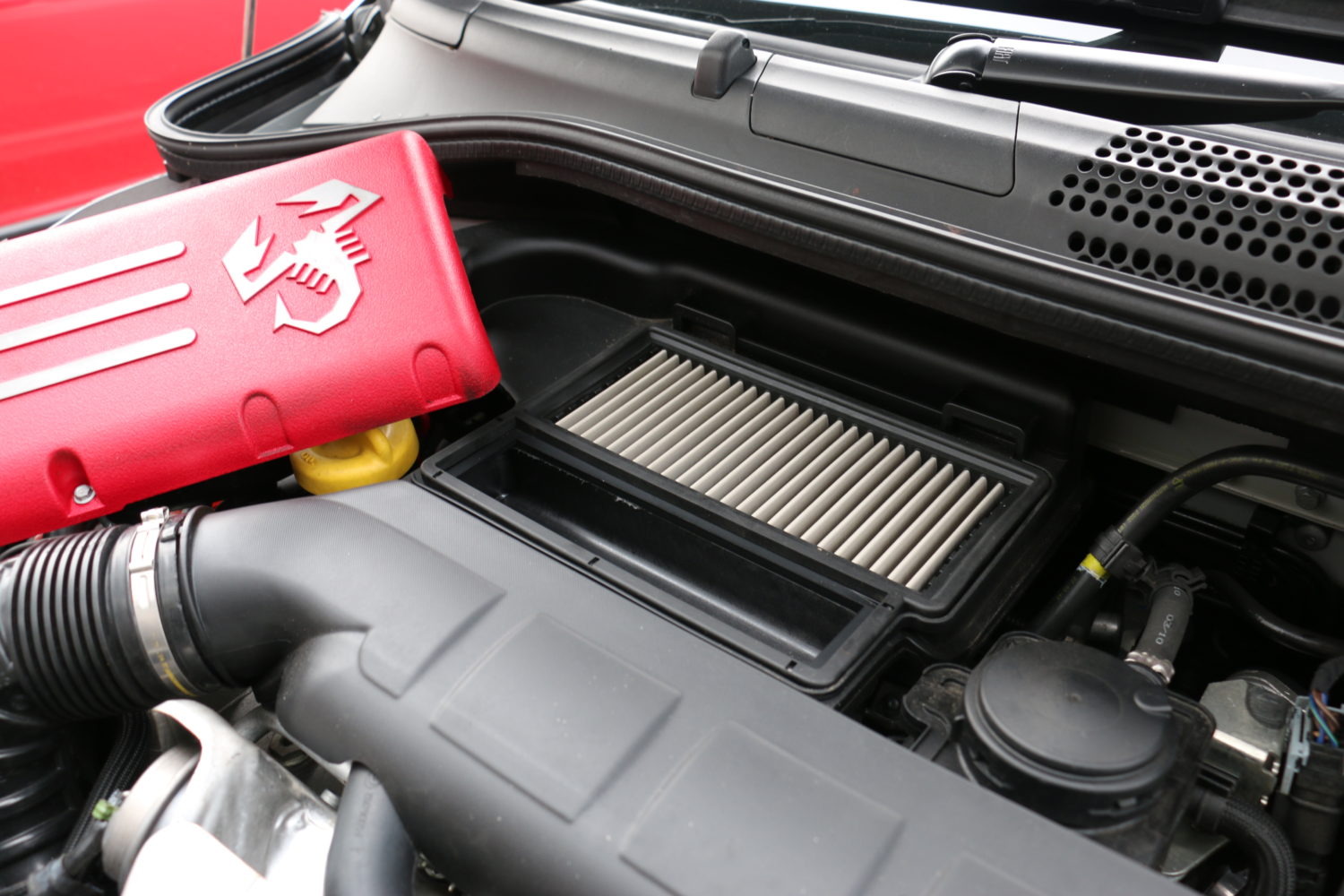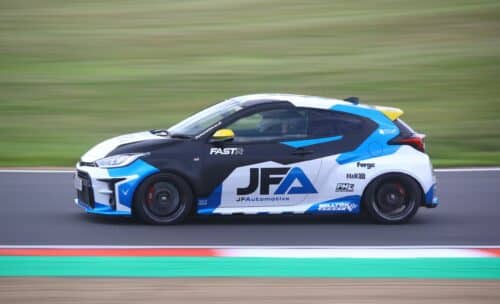
- Menu
- Specialist Vehicles
- Vehicle Tuning
- Vehicle Servicing
- Other Services
- More About Us
- Contact
- Menu
 https://jfautomotive.co.uk/wp-content/uploads/2019/10/IMG_3239-1-1500x1000.jpg
https://jfautomotive.co.uk/wp-content/uploads/2019/10/IMG_3239-1-1500x1000.jpg
The definitive guide to getting more power from your 500 Abarth fitted with the IHI turbo, and how to spot an IHI equipped car.
We often get asked about what upgrades you need to get a certain power goal from the IHI equipped Abarth 500, and what this is going to result in with regards noise, fuel consumption, special requirements etc. In this article we’re going to put together a comprehensive guide on what you’ll need to do to make power from the Abarth 500.
Firstly we need to identify the engine type fitted to the car, the easiest way of doing so is by the horsepower variant & turbocharger. The 135, 145 & 160BHP cars are all equipped with the IHI turbocharger, the 165 & 180BHP cars are equipped with a Garrett turbocharger. From this point onwards I’ll be referring to them as IHI or Garrett. We’ll look at the Garrett turbo engines in another article, this ones focused on the small turbo Abarths!
A great starting point is Stage 1. This is usually software only, however performance can be boosted by the addition of an induction kit from Ramair or Forge. We don’t reccomend an upgraded panel filter as the stock airbox is a very flawed and restrictive design, something that a better flowing filter can’t resolve.
Stage 1 Software only – 165-170BHP & 275-280Nm
Induction kit + Stage 1 Software (Forge Motorsport or Ramair) – 170BHP – 280-290Nm
The next steps are to deal with the exhaust. We’d usually refer to this as a stage 1.5 Tune. There are a lot of issues with OE exhausts. The catalysts are restrictive and trap heat, the bends in the pipework are badly formed (especially over the rear axel) and even the optional Record Monza backbox whilst looking great and makes the right noises just doesn’t help make it any better.
We recommend a 200 cell sports catalyst NOT a decat. The sports cat keeps you MOT legal, and also helps to keep the turbocharger spinning at optimal speed – resulting in as much as a 40Nm gain in torque compared to a decat, whilst sacrificing 1-2BHP peak power. It’s a no brainer and makes a huge difference.
For stage 1.5 – Sports cat, Scorpion Exhaust, Induction kit & Software – 170-175BHP & 300-310NM
At Stage 2 we adress the cooling of the vehicle to try and boost peak power. The stock car has two small intercooler cores, and a mass of pipework joining the two together, all of which we junk in favour of one large front mounted intercooler. This drops intake temperatures, allowing for more power. Two options really, Forge Motorsport or Airtec. Airtecs unit is cheaper, but requires total removal of the lower front crash bar. The Forge unit is significantly more expensive, but it fits better and retains the crash bar – we usually recommend to run Forge. Stage 2 reaches the maximum potential the smaller IHI turbo has to offer.
For stage 2 – Intercooler, Sports cat, Scorpion Exhaust, Induction kit & Software – 175-185BHP & 310-330Nm
At this point, major changes have to be made. Injectors are no longer capable of supplying the required fuel to keep the engine from running lean. Boost sensors can’t read high enough to deal with the increased boost pressure. Hence, we have to replace the turbochargers. We supply this as a JFA 260 kit complete, or can build around your existing setup, replacing as required.
Read more about the JFA260 kit here – JFA260 – stage 3 Big turbo kit
For stage 3 – Turbo, Injectors, Boost sensors, Intercooler, Sports cat, Scorpion exhaust, Intake kit & Software – 260BHP & 375Nm
Assuming 260BHP isn’t enough, the rods are on the limit. Depending on ECU type, you’d need to change pistons, rods & clutch & an aftermarket boost controller. If you’re running the JFA260 kit, you’ve already got the bolt ons capable of making 300+BHP. It’s just all down to how strong a bottom end you can build!

Search our ECU tuning options to increase the power and torque of your vehicle and our wide range of performance parts.